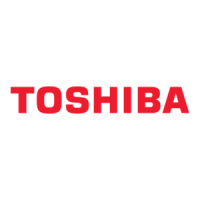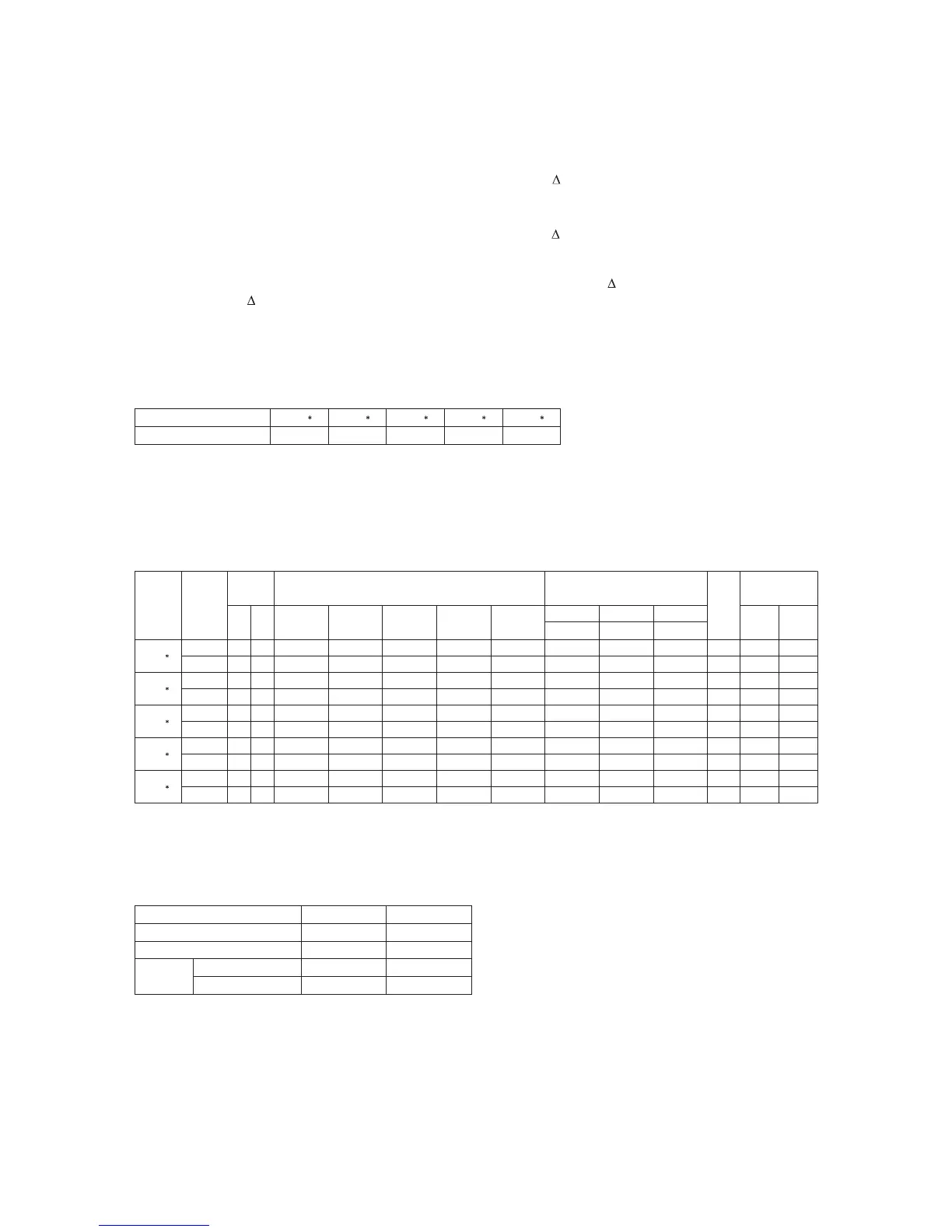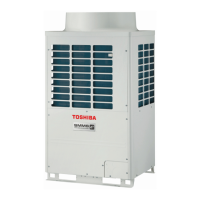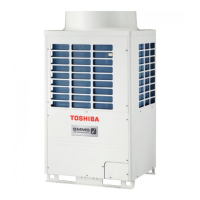– 145 –
Note 1: Criteria for the difference between suction and discharge temperatures
(1) Cooling operation
After operating for a minimum of 30 minutes in “COOL” mode, if the
T dry bulb temperature difference between
suction and discharge air of the indoor unit is 8°C or more, it is normal.
(2) Heating operation
After operating for a minimum of 30 minutes in “HEAT” mode, if the
T dry bulb temperature difference between
suction and discharge air of the indoor unit is 15°C or more, it is normal.
* If demand from the indoor unit on the outdoor unit is low because the difference between the temperature set
by the remote controller and the temperature of the room is small, then the
T temperature difference is small.
* Consider that
T temperature difference may diminish in cases of a system in which the connected indoor unit
capacity exceeds the outdoor unit capacity, the pipe length is long, or a large difference exists among outdoor
units.
Note 2: Criteria for operating power current
The table below shows the maximum current for each outdoor unit. Under standard conditions, operating current
is about 80% of the value shown in the table below.
Note 3: Criteria for cycle status
(1) These data are based on operating a 4-way Air Discharge Cassette type air conditioner of 100% connection
with standard piping length.
Data may vary depending on temperature conditions, installed pipe length, and room shape combinations, or
indoor unit connection capacity.
For pressure criteria in different temperature conditions, refer to (2).
* This compressor is driven with a 4-pole motor. The value of the compressor frequency (rps) measured with a clamp meter at the compressor
lead line is two times the rotation count (rps) of the compressor.
* Each compressor may have a different frequency as a measure against resonance.
* The temperature of the indoor heat exchanger (TC) indicates TCJ sensor temperature when cooling, and TC2 sensor temperature when
heating, respectively.
(2) Criteria for operating pressure
* Criteria after 15 minutes or more has passed since operating started
(3) On rotations of outdoor fans
Outdoor fans may rotate slowly to control pressure when cooling with low outer air temperature or heating with
excessive load. For control content, also refer to items in Section 5, “Control Outline: Outdoor Unit, Outdoor Fan
Control.”
Outdoor unit MMY-MAP 0804 1004 1204 1404 1604
Current value (A) 23.5 25.5 28.5 33.2 36.5
Outdoor
unit
MMY-
MAP
Operating
mode
Pressure
(MPa)
Pipe surface temperature
(°C)
Number of compressor rotations
(rps)*
Indoor
fan
Air temperature
condition
(DB/WB) (°C)
Pd Ps
Discharge
(TD)
Suction (TS)
Indoor heat
exchanger
(TC)
Outdoor heat
exchanger
(TE)
Liquid
temperature
(TL)
Compressor Compressor Compressor
Indoor Outdoor
123
0804
Cooling2.90.985151040405050 –High27/1935/-
Heating 3.0 0.7 85 5 35 3 30 50 50 – High 20/- 7/6
1004
Cooling 3.0 0.8 85 15 8 40 40 65 65 – High 27/19 35/-
Heating 3.1 0.7 85 4 35 2 30 65 65 – High 20/- 7/6
1204
Cooling 3.1 0.8 85 17 8 40 40 70 70 – High 27/19 35/-
Heating 3.1 0.7 90 2 35 2 30 75 75 – High 20/- 7/6
1404
Cooling3.00.88515104040606060High27/1935/-
Heating 3.1 0.7 85 4 35 3 30 60 60 60 High 20/- 7/6
1604
Cooling3.10.89015104040656565High27/1935/-
Heating 3.1 0.7 90 2 35 2 30 65 65 65 High 20/- 7/6
gnitaeHgnilooCedom gnitarepO
Indoor temperature (°C) 18~32 15~32
Outdoor temperature (°C) 25~35 5~35
Pressure
High pressure (MPa) 2.0~3.3 2.5~3.3
Low pressure (MPa) 0.5~0.9 0.5~0.7

